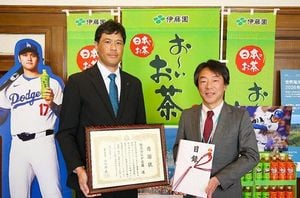Azerbaijan's Trade Imbalance Raises Concerns Among Economists
Recent analysis reveals a troubling trend in Azerbaijan's import-export balance, with imports significantly outpacing exports. Opposition politician and economist Natig Jafarli has scrutinized the official trade statistics for January and February 2025, highlighting a negative trade balance that he believes the government should address urgently.
According to Jafarli, Azerbaijan's trade with post-Soviet countries presents a stark imbalance. For instance, exports to Russia stood at $151 million, while imports from the same country reached a staggering $847 million. The figures for other post-Soviet states are similarly concerning: exports to Kazakhstan were $12.2 million against imports of $59.7 million; exports to Belarus were $10.7 million compared to imports of $55.6 million; and exports to Uzbekistan amounted to $5.5 million, with imports soaring to $59.5 million. Notably, exports from Uzbekistan to Azerbaijan have tripled compared to the same period last year.
Further illustrating the imbalance, exports to Turkmenistan were recorded at $6.7 million against imports of $43.8 million, and exports to Kyrgyzstan were a mere $800,000, while imports were around $2 million. Jafarli remarked, "It turns out that the country is unable to produce and sell competitive goods to these states. Oil and gas revenues partially offset this gap. However, given the decline in production volumes and oil prices, these funds will not be sufficient in the future."
Jafarli's analysis indicates that Azerbaijan is "losing 6–0" in its trade balance with post-Soviet states. He emphasized the need for the government to recognize the gravity of the situation, stating that Azerbaijan's primary export products remain oil and gas. However, these resources are either not supplied to most post-Soviet countries, except Georgia, or exported in minimal quantities. This reality underscores the weaknesses in Azerbaijan's trade relations.
Moreover, the economist pointed out that a negative trade balance signals shortcomings in the government's economic policy. He stated, "To develop the economy, it is essential to focus on producing and exporting competitive goods. Otherwise, as oil and gas revenues decline, the vulnerable sides of the economy will become even more apparent."
Jafarli's analysis of the import-export statistics reveals several key takeaways:
- Azerbaijan's imports significantly exceed its exports, with imports from Russia being five times higher than exports, a serious negative factor for the trade balance.
- In trade with CIS countries, imports account for 31.29%, while exports make up only 3.82%.
- Imports from other countries constitute 49.55% of total trade.
- The low level of exports to post-Soviet countries indicates Azerbaijan's struggle to produce competitive goods, while high import volumes from these states show the strong presence of their products in the Azerbaijani market.
- Non-oil exports represent just 9.43% of total exports, reflecting a lack of economic diversification and limited domestic product range.
- The tripling of Uzbekistan's exports to Azerbaijan may indicate some regional economic engagement, but overall trade relations with post-Soviet countries remain underdeveloped.
These statistics highlight the structural problems within Azerbaijan's economic model. With a significant portion of foreign trade reliant on oil and gas, the economy remains vulnerable to fluctuations in the global energy market, posing risks to long-term stability. The weak performance of non-oil exports further indicates Azerbaijan's limited competitiveness in external markets and high dependence on them.
The government’s insufficient investment in the non-oil sector has led to stagnation and a declining export capacity. Jafarli argues that urgent reforms are necessary to secure a stronger regional and global position for Azerbaijan. He asserts, "The current situation underscores the urgent need for change, so that Azerbaijan can secure a stronger position both regionally and globally. This requires comprehensive reforms in the country’s economic policy and strategic direction. Diversifying the economy would ensure greater stability and long-term success."
Meanwhile, across the Pacific, Washington state officials are voicing concerns about the impact of tariffs on agricultural exports. Joe Nguyen, the state commerce director, warned that tariffs historically harm the state more than they help. In an interview with Seattle's public radio station KUOW, he stated, "Tariffs often function as a tax on American consumers and businesses. We've found that nearly 93 percent of tariffs are passed on to consumers, driving up costs."
Nguyen expressed particular concern for agricultural communities that rely heavily on global exports, especially for products like apples, cherries, and hops. He emphasized the need for predictable trade policies to foster economic stability, noting, "Washington state can't fully insulate itself from reckless federal policies. Trade decisions made on a whim have global consequences. Our focus must be on protecting local businesses, workers, and consumers as much as possible."
Washington is one of the most trade-dependent states in the nation, with 40 percent of its jobs linked to trade and approximately $60 billion in annual exports. According to a fact sheet from U.S. Senator Maria Cantwell, China is Washington state's third-largest export market, with Washington-grown or processed food and agriculture exports to China valued at $857 million in 2023.
During a Senate meeting on March 4, Cantwell warned that retaliatory tariffs could spell disaster for farmers, stating, "When retaliatory tariffs strike our farmers, just as they did in the first Trump administration, it's not going to be fun. It's going to be a nightmare for our farmers."
Oregon, another state heavily reliant on trade, exported $34 billion in goods in 2024, with nearly half going to Mexico, China, and Canada. Oregon Treasurer Elizabeth Steiner cautioned that tariffs could lead to inflation, job losses, and slowed long-term economic growth. She remarked, "Government should be predictable and steady. Businesses and families rely on rational policymaking."
Economists estimate that tariffs on Canada, Mexico, and China could cost households an additional $1,200 annually, a burden that Steiner highlighted as unsustainable for families already struggling to save.
Industry experts also voiced concerns about the long-term effects of tariffs on the agricultural sector. Alexis Taylor, chief global policy officer at the International Fresh Produce Association, noted that the U.S. has lost long-term market share in China's fresh produce sector due to the trade war. She stated, "While we may want to bifurcate the agricultural relationship, they do not want to bifurcate that relationship."
Taylor pointed out that U.S. exports to China have dropped significantly, from an average of $500 million or $450 million worth of products from 2005 to 2017, to just $200.36 million from 2020 to 2024. She concluded, "When you lose some of these markets, it's very hard to get them back."







